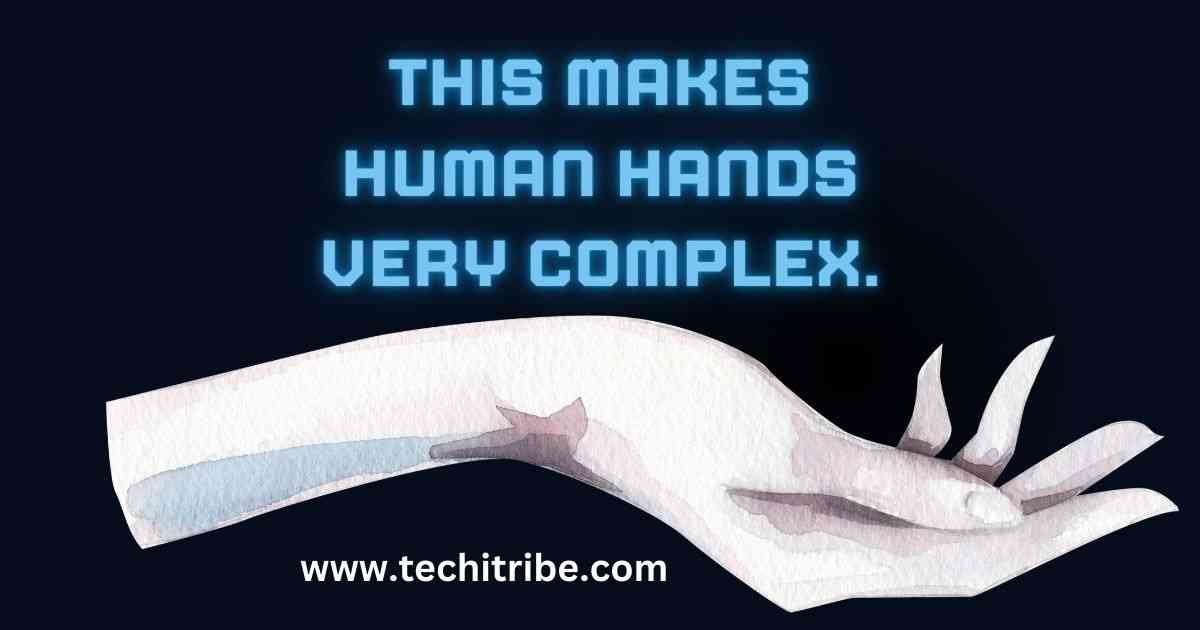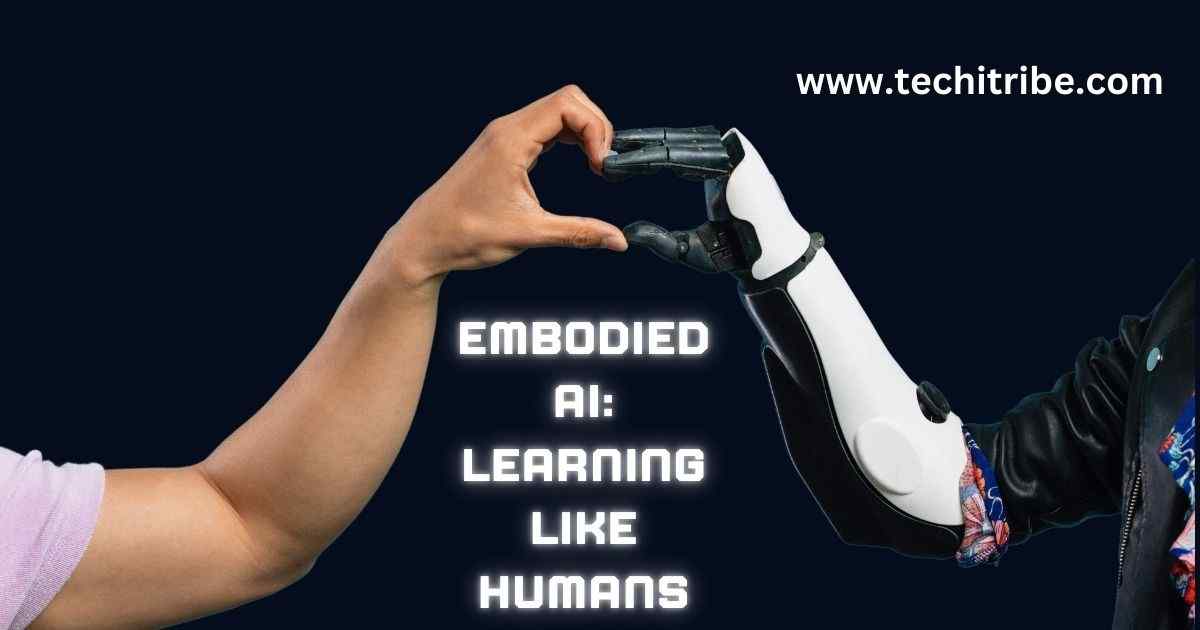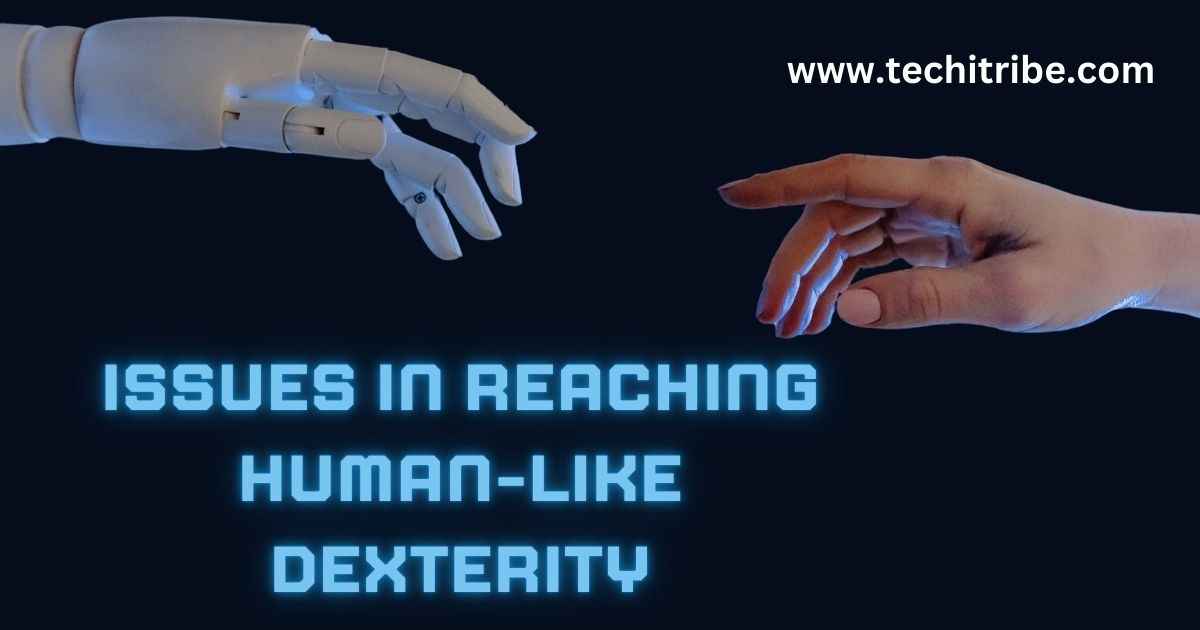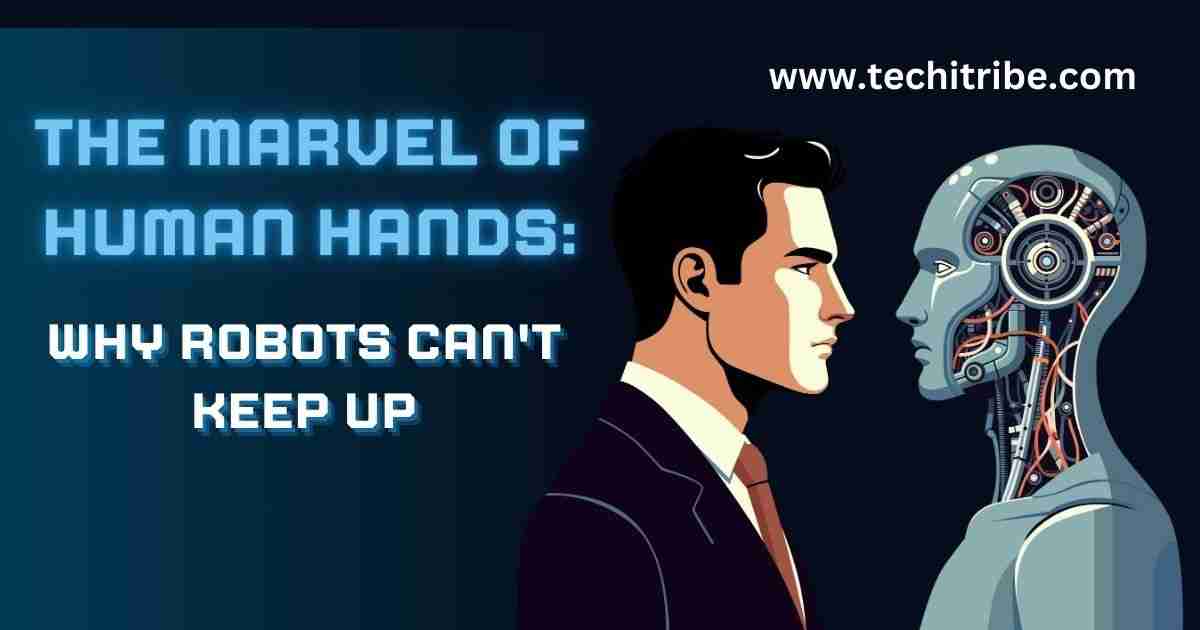Robotic Dexterity, The human hand is the marvel of engineering, unmatched in dexterity and precision. It has 27 degrees of freedom, more than 30 muscles, and over 17,000 touch receptors in the palm alone. Every day our hands do thousands of complex tasks. This extraordinary versatility makes it difficult for robots to replicate their capabilities, even with advancements in artificial intelligence (AI).
Also visit this link: Donald Trump issues executive order delaying TikTok ban in US

This makes human hands very complex.
Robotic Dexterity, Our hands do play a part in even the most mundane of day-to-day activities: the dainty action of picking up a pen or the muscular effort in trying to force open a well-sealed jar. It speaks of the wonderful way in which the brain interacts with the body—what is called fine motor control and feedback of sensory origin. All of this is made possible by this network of ligaments, tendons, and joints—that wonderful spread of different ranges of movement and the feel coupled with real-time feedback from receptors to adjust grip and pressure.
A Revolutionizing Discovery
Robotic Dexterity, Sarah de Lagarde is one of the pioneers of technological change. Sarah was hit by a train and lost her right arm and portion of her leg in 2022. Just after a few months, the accident had occurred, and the National Health Service from the UK fitted a prosthetic arm to Sarah. It performed just partially since it could not make movements like an amputated hand of man because it lacked static movements.
This is until she saw a battery-powered bionic arm that is controlled by AI. This new-fangled device uses myoelectric pattern recognition to determine muscle signals. So, the arm can predict movements. De Lagarde says: ‘It learns every time I make a movement.’ The AI makes better predictions the more she does, making the movements more intuitive and seamless over time.
AI in Dexterity
Robotic Dexterity, Making anything from as mundane to writing complex by sensory-muscular levels in which it is performed makes even such activities a challenge even for robots to copy. What is more problematic to be able to copy with any degree is such an activity. Long, long ago, a prosthetic device was always focused on aesthetics without function. What has been emerging in AI very recently finally removes machines from some seeming impossibility considered to have been reserved just for human dexterity.
For example, the soft strawberry picking robot that could be developed and takes strawberries out of the soil. The vision-guided robots will control the nuclear waste; even those soft robots will not be in danger. Intelligent prosthesis in the form of De Lagarde’s arm predicts and improves their movements in accordance with a user’s intention.

Embodied AI: Learning like Humans
Robotic Dexterity, Embodied AI has been a long way for the robotics field to advance, unlike the process of traditional AI that abstracts information not from the real world but actually detached from reality. It goes through trial and error, almost like babies; they learn to walk without any idea that, in fact, that is what they are learning. The child will only see things and, with associated maturation within his motor cortex of the brain, be able to act on something consciously. But then his movement is determined through sensory feedback.
According to Eric Jing Du, an assistant professor of civil engineering at the University of Florida, “Traditionally, AI works with information, while embodied AI perceives, understands, and interacts with the world.” In this context, assuming sensory inputs such as vision and touch can be fed to the robot, it will at least have an opportunity to carry out activities within a complex setting, either possibly without clear instructions or at times randomly.
Novelty in Robot Hands
Robotic Dexterity, The best example of that is the Shadow Robot Company, which produced tendon-style, three-fingered drivers of DEX-EE that managed to achieve up to 12 degrees of freedom. Real-time readout of fingertip sensors and hence the potential data on the position, force, and inertia make it easy to handle dexterously fragile items, such as eggs and balloons. So far, this DEX-EE is an academic device alone, but what promise does that already bring along with it concerning AI-driven robotics.
Similarly, reinforcement learning has been what made Boston Dynamics’ Atlas robot show the way to be used for enhancing capabilities in robots. That it can cope with complex tasks such as object organization does demonstrate the step being taken into human dexterity.
Practical Applications of Dexterous Robots
Robotic Dexterity, Their dream is that robots should do those jobs that are unsafe, boring, or generally not for the human. Examples include AI robot explorers, cleaners of dangerous wastes in the nuclear energy sector. Working completely autonomously in high risk areas, AI vision systems serve as their basis to do the required job.
For instance, the problem of using human hands in farming is addressed by the robots of Dogtooth Technologies, which mechanize fruit-picking. With color cameras and precision pincers, these robots find out which fruit has ripened and pick the fruits without inflicting a bruise on the fruit. Innovation of such a nature does not come at the cost of replacing human hands but supplements such human hands to ensure effectiveness and sustainability in the process.

Issues in Reaching Human-Like Dexterity
Robotic Dexterity, All these aside, full functionality of the human hand remains very difficult to reproduce. No robots so far can execute activities demanding much movement precision and adaptation to irregular shapes and textures. As said by MIT associate professor Pulkit Agrawal, huge steps have already been taken but just a couple of years are still needed before achieving human-like dexterity.
The biggest challenge to integrate sensory feedback into robots is that the human hand needs an advanced network of touch receptors in order to modulate the strength of the grip and sense changes in friction. Until now, no kind of sensors has been developed for non-human robotic systems to mimic this type of sensitivity, so handling delicate objects is quite difficult.
Ethical and Safety Considerations
Robotic Dexterity, Secondly, the safety with humans in contact is also achieved as the population of robots in under growth. Also, it comes with physical as well as system protection, that means it is such designs that are safeguarded to stop malfunctions caused by bad failures. Furthermore, employment and unemployment issues caused through automation have sparked some ethical matters.
Future for Bionic Limbs
Robotic Dexterity, It designs new prosthetic technologies and offers much greater possibilities of opportunity for a limb-different individual. Bionic arm invented by De Lagarde is more the future direction to human robot interface. Comes haptic feedback devices. She now carries out procedures quite correctly; an egg does not break open during picking. Nevertheless, with lots of drawbacks. She needs to be recharged by it every following day and learns to expand development further into her sense of touch, which the bionic offers.
Conclusion: Closing the Gap between Human and Machine
Robotic Dexterity, The end is far from being over for the replicating dexterity of human hands. Even as artificial intelligence comes through robotics, huge things remain yet to be drawn out from the complexity of the human body. As technology goes ahead, then life will just improve in whatever new means involving the use of robotics and prosthetics there can be imagined. For people such as De Lagarde, that’s not so much restoration of lost abilities, but rather a whole new frontier in the human world of potential.
